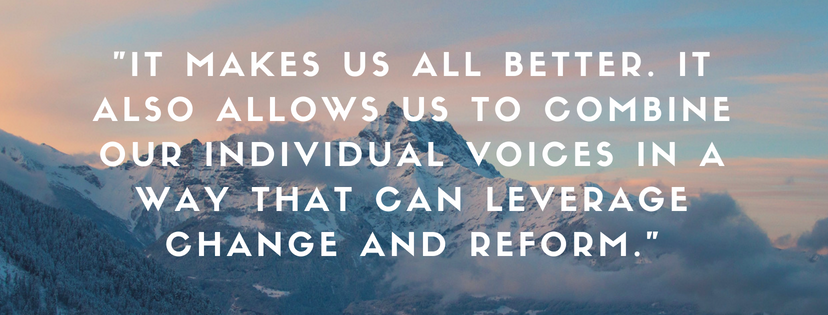
This is a monthly blog by AJ Fawver, the Planning Director in Lubbock, Texas. She’ll share her perspectives on land use, planning, and community development in this series. Learn more about AJ from her GovLove interview! Read the whole series here.
 Working as a planning professional can be a trying endeavor. The environment is challenging as we balance politics, prevailing opinions, and best practices. It can be a lonely endeavor. Often, planning departments are among – if not – the smallest in the organization.
Working as a planning professional can be a trying endeavor. The environment is challenging as we balance politics, prevailing opinions, and best practices. It can be a lonely endeavor. Often, planning departments are among – if not – the smallest in the organization.
This means fewer resources, small budgets, and the tendency to be left out of the information loop. Planning is truly a field which almost every department in the organization affects in some way.
Being the “big picture” people necessitates being plugged into a variety of projects and discussions, and it is a full-time job simply getting a spot at the table and keeping up-to-date with the latest developments.
Adding to the solitary nature of the job is the sometimes adversarial approach to what planners do. At times, it feels like a losing battle redirecting or shifting the conversation to design standards, development regulations, and community plans.
Developing a network of others in the field is crucial. We need others who we can learn from, who we can ask for advice from, and who we can share ideas with. On the national and state level, many opportunities exist to get involved. However, at times, we overlook the power of networking within our community or region.
Serving in a leadership role in northwest Texas has taught me how beneficial and rewarding cultivating relationships within your own backyard can be. Our backyard is inclusive of 88 counties!
The voices of the communities similar to ours is valuable. The voices of communities smaller, larger, more rural or more urban than our own is also rewarding. Working within the parameters and framework we are accustomed to can get stale over time. Learning about others’ triumphs and failures, and their unique issues, helps us flex our “planning muscles” and get new perspectives we may have come to accept without question.
It makes us all better. It also allows us to combine our individual voices in a way that can leverage change and reform.
The next piece – after building a collaborative group – is crafting messaging. One thing we tend to agree on is the suburban development pattern is not working. Regardless of your lens – design, transportation, mobility, placemaking, efficiency, or environmental – this pattern is damaging. We know this, we talk about this, and we tend to obsess over this. But, the messaging hasn’t been effective.
 Enter Cultivate! Collaborative, a supercharged group armed with engineering expertise, planning expertise, passion, a concise message, and hard data. I sat in a session at last year’s Texas APA (American Planning Association) meeting focusing on ROI (Return on Investment) and various land development approaches, with Kevin Shepherd as one of the speakers.
Enter Cultivate! Collaborative, a supercharged group armed with engineering expertise, planning expertise, passion, a concise message, and hard data. I sat in a session at last year’s Texas APA (American Planning Association) meeting focusing on ROI (Return on Investment) and various land development approaches, with Kevin Shepherd as one of the speakers.
I listened to the financially-based analysis that articulated the planning principles I felt fell on deaf ears. After a few emails to Kevin (based on the premise that we had nothing to lose) we were hosting Cultivate! in April, recognizing that our entire region could benefit from the message that applies to everyone from local activists to real estate professionals and developers, from planners to decision makers on councils and staffs alike.
Would these groups argue that getting more done with the resources their communities have is a bad move? That a self-sustaining local economy is damaging? That faster and more efficient regulatory processes should be avoided? That an engaged, active public is worse than apathy? Or, that development that is fiscally sustainable for years and decades to come is not important? Not a chance.
Most importantly, we inherently knew these basics. We had not formulated a way to effectively share that message.
Our experience with Kevin and co-founder Matt Lewis was invaluable. Attendees were excited about returning to their communities and implementing the concepts immediately, and they were acquainted with the necessary facts and arguments.
Armed with case studies of tactical urbanism and basic approaches to examining the ROI of development styles, we accomplished something important – crafting an appropriate message for everyone in a community.
The facts create a baseline for informed discussions about the way communities work and how they could work. They ground our fantastical brainstorming. They are universally applicable.
We never reach the point in our careers that we have learned it all. It’s incredibly exciting to see the emergence in planning of some of the “real talk”; unabashed, logical, direct, and instructive. The presence of organizations like Strong Towns, which aim to transform how communities are developing.
Cultivate! Collaborative builds on that message by offering strategies in short sessions, or serving up long-term partnerships that focus on creating action plans and transformative implementation. Reach out to these guys – you won’t be sorry.
Bottom line? Get involved with the planning folks in your city, metro area, or region. Look for ways to expand your knowledge to adjacent areas like real estate, financing, and policy making. Lastly, do not be afraid to reach out and ask for help or pose questions.
When something interests you, pursue it! You never know what fantastic possibilities and positive relationships might come out of it.
